Results 5,161 to 5,170 of 12096
Thread: Anandtech News
-
07-13-15, 07:31 AM #5161
Anandtech: The NZXT S340 Case Review
Today we are having a look at the NZXT S340, a metallic compact "ODD-Free" tower case designed for home and gaming PCs. Despite the 90% metal design and the numerous features, the case retails for just $80. We are examining its strengths and weaknesses in this review. It also happens to be the case chosen by Zotac in our recent Build-A-Rig project.
More...
-
07-13-15, 08:31 AM #5162
Anandtech: SanDisk Announces iNAND 7232: eMMC 5.1, 128GB, and SLC/TLC
Today at MWC Shanghai, SanDisk announced a follow-up to their iNAND 7132 eMMC solution, the iNAND 7232. For those that are unfamiliar with the iNAND 7132, I would refer to our previous coverage on that storage solution. At a high level, the real importance of that product launch was that SanDisk was able to use TLC NAND to provide relatively low-cost storage with high performance using SLC caching much like their consumer SSDs. Peak sequential reads can reach 280 MB/s, and peak sequential writes can reach 125 MB/s on an eMMC 5.0 HS400 interface. There were 16, 32, and 64 GB SKUs which didn’t do much to push the bar in terms of on-device storage, but there are some real cost and performance benefits for certain scenarios that could provide an advantage over traditional MLC eMMC solutions at the high end which would go a long way to killing the 16GB SKU that has plagued the high-end smartphone for so long.
The iNAND 7232 is an obvious successor to the 7132, as it’s built on SanDisk’s 15nm process with TLC NAND and an SLC cache somewhere in the range of 500MB to 1GB, but this will depend upon the SKU. However, unlike the 7132 SanDisk has finally eliminated the 16GB SKU so the only available storage capacities are 32, 64, and 128 GB. This new solution also supports eMMC 5.1 with a command queue to improve random IO read speeds. Sequential read speeds are unchanged with a maximum of 280 MB/s, but sequential write improves to hit up to 150 MB/s. The iNAND 7232 is currently sampling to OEMs, and it’s likely that we’ll see devices shipping with this solution in the fall.
More...
-
07-13-15, 06:00 PM #5163
Anandtech: Quick Note: Intel “Knights Landing” Xeon Phi & Omni-Path 100 @ ISC 2015
Taking place this week in Frankfurt, Germany is the 2015 International Supercomputing Conference. One of the two major supercomputing conferences of the year, ISC tends to be the venue of choice for major high performance computing announcements for the second half of the year and is where the summer Top 500 supercomputer list is unveiled.
In any case, Intel sends word over that they are at ISC 2015 showing off the “Knights Landing” Xeon Phi, which is ramping up for commercial deployment later this year. Intel unveiled a number of details about Knights Landing at last year’s ISC, where it was announced that the second-generation Xeon Phi would be based on Intel’s Silvermont cores (replacing the P54C cores in Knights Corner) and built on Intel’s 14nm process. Furthermore Knights Landing would also include up to 16GB of on-chip Multi-Channel DRAM (MCDRAM), an ultra-wide stacked memory standard based around Hybrid Memory Cube.
Having already revealed the major architecture details in the last year, at this year’s show Intel is confirming that Knights Landing remains on schedule for its commercial launch later this year. This interestingly enough will make Knights Landing the second processor to ship this year with an ultra-wide stacked memory technology, after AMD’s Fiji GPU, indicating how quickly the technology is being adopted by processor manufacturers. More importantly for Intel of course, this will be the first such product to be targeted specifically at HPC applications.
Meanwhile after having previously announced that the design would include up to 72 cores - but not committing at the time to shipping a full 72 core part due to potential yield issues - Intel is now confirming that one or more 72 core SKUs will be available. This indicates that Knights Landing is yielding well enough to ship fully enabled, something the current Knights Corner never achieved (only shipping with up to 61 of 62 cores enabled). Notably this also narrows down the expected clockspeeds for the top Knights Landing SKU; with 72 cores capable of processing 32 FP64 FLOPs/core (thanks to 2 AVX-512 vector units per core), Intel needs to hit 1.3GHz to reach their 3 TFLOPs projection.
Moving on, Knights Landing’s partner interconnect technology, Omni-Path, is also ramping up for commercial deployment. After going through a few naming variants, Intel has settled on the Omni-Path Fabric 100 series, to distinguish it from planned future iterations of the technology. We won’t spend too much on this, but it goes without saying that Intel is looking to move to a vertically integrated ecosystem and capture the slice of HPC revenue currently spent on networking with Infiniband and other solutions.
Finally, in order to develop that vertically integrated ecosystem, Intel is announcing that they have teamed up with HP to build servers around Intel’s suite of HPC technologies (or as Intel calls it, their Scalable System Framework). HP will be releasing a series of systems under the company’s Apollo brand of HPC servers that will integrate Knights Landing, Omni-Path 100, and Intel’s software stack. For Intel the Apollo HPC systems serve two purposes: to demonstrate the capabilities of their ecosystem and the value of their first-generation networking fabric, and of course to get complete systems on the market and into the hands of HPC customers.
More...
-
07-14-15, 07:30 AM #5164
Anandtech: ASRock Beebox Review: A Fanless Braswell UCFF PC
ASRock had taken an early lead in serving the mini-PC market, thanks to its Core / Vision series units. Based on motherboards meant for the notebook market (smaller than mini-ITX, but larger than pico-ITX), they have been regularly refreshed since the ION days. Strangely, the company didn't have any play in the NUC form-factor that has provided growth in the desktop space over the last couple of years. That changes with the arrival of Intel's 14nm Braswell. The ASRock Beebox is a NUC based on the Intel Celeron N3000, and carries some unique features that include fanless operation and a USB Type-C port in the front panel. Read on for our review of the unit to see what it brings to the market.
More...
-
07-14-15, 04:30 PM #5165
Anandtech: Citrix Brings Full Support For Windows 10 To Its Desktop Virtualization Pr
Today is the Microsoft Worldwide Partner Conference, and one of Microsoft’s biggest partners over the years has been Citrix. I got a chance to speak to Citrix about their support plans for Windows 10, and Citrix is making a big commitment to help their customers with the transition to not only a new operating system, but a new app platform as well.
Citrix has received a lot of feedback from their partners over Windows 10, and the feedback has been positive. The Start Menu return is a big win for the enterprise as well as the consumer, and Citrix is aware that the free upgrade offer for Windows 10 from any genuine Windows 7 or Windows 8.1 device is going to help drive adoption. The traditional enterprise will not benefit from this free upgrade of course, but with the consumerization of IT over the last several years, Citrix wants to be ready to support organizations where the end user brings in their own device, rather than the traditional model of IT controlling the desktop. Since consumers will benefit from the free Windows 10 update, any organizations that do BYOD (bring-your-own-desktop or laptop) need to be ready. To support this, Citrix will have its Citrix Receiver for Windows 10 available on July 29th – the same day Windows 10 ships.
For those unfamiliar with the Citrix Receiver, it allows organizations to stream applications or entire virtual desktops using XenApp and XenDesktop. Clients install the receiver, and assuming they have network access to their corporate LAN they can access all of their applications or entire desktops through a streaming session. This keeps the corporate data off of the end device, allowing better data security especially when these devices are not owned by the corporation.
The Receiver will also be getting an update to make it a Windows Universal App, which will allow it to free form to whatever device type or usage model is being implemented at any time. On a Surface Pro for instance, it can change itself into a tablet mode when the keyboard is removed just like other Windows apps. This won’t be shipping on day 1 since Citrix needs to wait for the official Software Development Kit in order to complete the project, but look for it soon.
For those that are looking into migrating to Windows 10 at some point in the future, Citrix has updated their AppDNA application to support Windows 10 as well. It will be able to examine an application and determine if it will support Windows 10, and if minor changes are required it can even perform the changes itself. Those that test poorly will have to be assigned to a developer to make further changes. AppDNA will be ready to allow porting of applications to Windows 10.
AppDNA is part of the Citrix XenApp and XenDesktop Platinum line, but will be made available free of charge for one year to all of Citrix’s partners so that they can assist any clients with migrating apps over to Windows 10. It works on traditional applications or web applications. Normally the service starts around $350 per user per year. Partners will of course still be allowed to charge for their services, but this should make it much less expensive to get off the ground. XenApp is a full lifecycle app as well, which can be used by the end clients to manage the app going forward. I was told this was a very successful tool in helping clients migrate to Windows 7.
Their third big announcement on the VDI front is that Citrix is releasing a tech preview of the Windows 10 Virtual Delivery Agent, which is the component which allows you to deliver Windows 10 images via XenDesktop. This is available now allowing partners to begin testing Windows 10 for VDI deployments ahead of the official Windows 10 release. With yet another major OS upgrade, Citrix is hoping the time is right to do a virtual desktop delivery now rather than yet another physical rollout.
Although not part of this release, I was told that all of the other Citrix products such as ShareFile, GoToMeeting, and the rest, will also be available for Windows 10 on day one.
One thing that has not been possible up until now has been to use XenApp to deliver a Windows Universal app through the receiver, however I have been told that this will be possible with Windows 10. With Windows 8.1’s sandbox, the only apps which could be streamed were Win32 applications and not WinRT. Citrix is obviously seeing that the new store model is one that people and companies have embraced, and have worked to support this in Windows 10. I look forward to trying this out.
Source: Citrix
More...
-
07-14-15, 10:00 PM #5166
Anandtech: HP Announces Windows 10 Devices And Services
With Windows 10 coming in about two weeks, the amount of news from OEMs is ramping up as they prepare for the Windows 10 rollout. HP has some new devices and services they have put together for the launch, which fall under their business line of products.
HP’s first announcement is HP Sure Start, which was first launched in 2013, and HP is making the push to let prospective buyers know that they are the only company with this technology at the moment. HP Elite line of notebooks, as well as HP ZBooks will offer Sure Start, which protects against BIOS malware by performing a check on the BIOS before the system boots, and if it finds that the BIOS has been tampered with it overwrites it to the original state. Checking the BIOS before launch is certainly not a new idea, and Windows Secure Boot already does this, however HP’s new addition of having a clean copy of the BIOS to re-write if needed is something that is not part of the Secure Boot process, which will perform the check but if it fails the test, the system will just not boot.
Beginning in August, HP will begin to offer Windows 10 pre-installed on commercial offerings. Not all devices will have an image ready on day one, and HP expects all existing commercial devices to have a Windows 10 image available by October.
Some of the new Windows 10 devices are a limited edition version of the HP EliteBook Folio 1020, and the HP Pro Tablet 608. The Elitebook actually launched in December, and HP is launching a limited edition of it called the Bang & Olufsen limited edition, which will be available in the fall. HP’s EliteBook is the thinnest and lightest business class notebook offered today, at 2.2 lbs or 1 kg for the “special edition” version, and just 0.6 inches or 15.7 mm thick. It’s a Core M powered notebook with the Core M-5Y51 and 5Y71 offerings and a 12.5-inch display with 1920x1080 or 2560x1440, with touch optional on the normal version. The new model will offer a new color, in addition to the Bang & Olufsen audio, with an ash silver and copper finish which looks quite attractive.
The other device HP is a tablet which apparently slipped through the cracks here as I had not seen it before. The HP Pro Tablet 608 which they announced on June 18th. This is an 8-inch tablet powered by the Intel Atom-Z8500 Cherry Trail processor with up to 4 GB of memory and 128 GB of eMMC storage. Something different in the Windows space is the tablet’s 4:3 aspect ratio for the 2048x1536 display, and the tablet will feature a USB-C port for charging and data transfer. There will be an option pen and of course a full line of business accessories such as docks and keyboards. The tablet starts at $479 with the Windows 10 version coming in August.
The countdown to Windows 10 is certainly on and HP’s business offerings have stepped up with some nice hardware.
Source: HP
More...
-
07-15-15, 02:06 AM #5167
Anandtech: HTC Launches The Desire 520, 526, 626, 626s In The United States
Today HTC announced that they are launching a number of devices in their Desire smartphone line in the United States. In order, the newly available smartphones are the HTC Desire 520, HTC Desire 526, HTC Desire 626, and the HTC Desire 626s. All of these devices expand HTC's product line in the low-end section of the smartphone market, and you can check out their specifications in the chart below.
As you can see from the chart, all four of these devices are fairly similar as far as specifications go. All use Qualcomm's Snapdragon 210 SoC, which is the first time to my recollection that we've seen this part show up in smartphones. Snapdragon 210 is a quad core Cortex A7 part with a peak frequency of 1.1GHz, which makes it slightly slower than Qualcomm's Snapdragon 400 parts. On the GPU side, the Adreno 304 GPU is just a variant of Adreno 305 with a max frequency of 400MHz. All of the devices have 8GB of NAND, with the exception of the Desire 626 which has 16GB. On the DRAM side, the Desire 520 and 626s have 1GB of RAM, while the Desire 526 and 626 bump that to 1.5GB. All four phones also have the same 7.6Wh battery capacity, and they all share an 8MP rear camera, with everything except the 5MP Desire 626 also sharing a 2MP front-facing camera.Device HTC Desire 520 HTC Desire 526 HTC Desire 626 HTC Desire 626s SoC Qualcomm Snapdragon 210 MSM8909
4 x Cortex A7 at 1.1GHz
Adreno 304 at 400MHzRAM / NAND 8GB / 1GB 8GB / 1.5GB 16GB / 1.5GB 8GB / 1GB MicroSD MicroSDXC up to 2TB Thickness 9.05mm 9.9mm 8.19mm 8.19mm Display 4.5" 854x480 LCD 4.7" 960x540 LCD 5.0" 1280x720 LCD 5.0" 1280x720 LCD Camera 8MP Rear
2MP Front8MP Rear
2MP Front8MP Rear
5MP Front8MP Rear
2MP FrontBattery 2000 mAh (7.6Wh) Connectivity 802.11 b/g/n + BT 4.1, GNSS, microUSB2.0 OS Android 5.1 With HTC Sense
The major point where these four devices differ is their display size and resolution. The Desire 520 is at the low end of the range with its 4.5" 854x480 display, followed by the 960x540 Desire 526, and the 5.0" 1280x720 Desire 626 and 626s. Since the 626 and 626s are larger with the same battery capacity they are thinner than the 520 and 526. Interestingly enough, the Desire 526 is almost 1mm thicker than the 520 despite its larger screen size.
The Desire 626 and 626s will be available in all the colors you see in the cover image above. The Desire 526 comes in black, while the Desire 520 will come in grey. As far as availability goes, HTC says that these devices will be available in a variety of colors from both prepaid and postpaid US carriers. Specifically named operators include AT&T, Boost Mobile, Cricket, MetroPCS, Sprint, T-Mobile, Tracfone, Verizon, and Virgin Mobile USA. T-Mobile is curiously missing from the list. According to HTC, providers will confirm which models and colors they're carrying beginning this week, and they will be available in the coming months.
More...
-
07-15-15, 07:08 AM #5168
Anandtech: Interview with Kevin Chen, ADATA's Vice President of SSD Marketing
Last year at Computex I had the opportunity to interview ADATA’s President Shalley Chen. At the time, we discussed the SSD and DRAM industries in general as well as ADATA’s strategy especially in the dynamic SSD market. This year I got the chance to sit down with Kevin Chen, Vice President of SSD Marketing, to focus on ADATA’s plans for TLC and PCIe SSDs. Rather than a pure Q&A outlay interview similar to what we have done in the past, I've put together what we discussed in a general written format.
ADATA's SSD Business
Mr. Chen joined ADATA last year and prior to that he served a year as the President of Taiwan IC Packaging Corporation. He was also the Vice President of R&D at Transcend, another SSD company, for nearly a decade and academically Mr. Chen holds a degree in Communication Engineering from National Chia Tung University.
To give some background, Mr Chen explained ADATA’s business model and key partners in the SSD industry first. ADATA’s business model is a so called ‘module house’, meaning that the company doesn’t design or manufacture the chips it uses, but merely does the assembly, validation and marketing of the final product. This stems from the pre-SSD days when the main product for companies like ADATA, Kingston and G.Skill was DRAM modules, which didn’t need much more than assembly and validation to be ready for the store shelves. SSDs are a little more complicated since in addition to the NAND chips an SSD needs a controller and a firmware which ADATA needs to source from a third party because its expertise is not in semiconductors or software/firmware. Some firmware might be optimised in house, but the goal of a module house is to source the controller (with firmware), and source the NAND, and put the two together. Different companies have competing combinations of controller/NAND, which makes the market interesting.
Currently ADATA’s key partners on the SSD controller side are Silicon Motion, Marvell, JMicron and Seagate. The secret behind Silicon Motion’s recent success is that the company offers both the silicon and firmware to its OEM partners like ADATA, who only have to assemble the actual drive, which is what all the module house companies do. That’s essentially why SandForce became so popular among various OEMs, as it was able to deliver one of the first SATA 6Gbps controller platforms that all module house companies wanted to use because the companies didn’t have their own controller or firmware technologies and needed a full solution for easy integration to their SSDs. Many companies, including ADATA, have since switched mostly to Silicon Motion controllers as the SF-2000 series is starting to be a bit long in the tooth and Silicon Motion is apparently able to offer better performance and cost efficiency over other offerings.
Speaking of which, Mr. Chen said that ADATA hasn’t fully abandoned Seagate/SandForce, but the constant delays with the SF3000 series have forced the company to shift its focus to other controller vendors. As we saw at ADATA’s booth this year, the company didn’t have any new SandForce based solutions to show, whereas last year and at CES earlier this year the SF3700 live demo was one of the highlights. Mr. Chen told me that ADATA still has a SandForce engineering team, but the team has been downsized and currently has only three members. Still, ADATA plans to make SF3000 based SSDs when the controller is finally available, but on the other hand it’s no longer relying heavily on SandForce like in the past.
On the Marvell side, ADATA doesn’t design its own firmware. Instead it uses firmware from a company called QSI, which is essentially a firmware house because QSI doesn’t sell or assemble drives – it only makes the firmware and licenses it to its partners. ADATA does, however, have a firmware team for JMicron and SMI controllers that mostly focuses on the industrial side, but Mr. Chen explained that Marvell’s architecture is totally different and would need a specific group of engineers. In addition, Marvell only provides a high level set of tools since the company itself doesn’t do any firmware (although I’ve heard rumors that this is about to change), whereas JMicron is more cooperative on that front.
The New SSDs
We already covered ADATA’s booth and the new SSDs at a high level and one of this year’s highlights for ADATA will be its TLC SSDs for which the company will have a two-product strategy by offering both SP550 and SP560 to the market. The SP550 features Silicon Motion’s SM2256 controller while the SP560 is Marvell based, and ADATA will be sourcing NAND from both Micron and SK Hynix. Mr. Chen explained that the reason behind the product positioning strategy is to offer two levels of performance because the controllers as well as the NAND have different performance characteristics. Mr. Chen didn’t want to speculate which of the drives, SP550 or SP560, will be better because the company is still in the middle of validation and final specifications have yet to be decided. Mr. Chen did however disclose that the SP550 and SP560 will both use NAND from both Micron and SK Hynix, meaning that we will likely see some performance variation depending on the NAND configuration. I suspect this is supply related because there will be a spike in TLC NAND demand in the second half of this year, so using two suppliers guarantees that ADATA won’t run into supply issues.
Given that there will be numerous TLC SSDs on the market by the end of the year, I asked Mr. Chen what is ADATA’s strength. Mr. Chen replied that unlike many other companies, ADATA does IC sorting (i.e. NAND binning) in-house, which guarantees a high level of quality. Mr. Chen said that many of ADATA’s direct competitors just buy NAND from the open market, which frankly results in varying quality of NAND inside the final product because not all dies are the same despite the matching part number. This aligns with what we've discussed at AnandTech, as NAND binning is important with TLC NAND. TLC is more complex by design than MLC and less tolerant against errors, meaning that only the best dies are qualified as SSD-grade whereas the rest end up in low-cost products like USB sticks and SD cards where quality isn’t as big concern. Additionally, Mr. Chen said that LDPC error correction is a must for long term durability, which is what both the SM2256 and Marvell’s 88SS1074 “Dean” controllers support.
On the PCIe side ADATA will have three products. The Marvell “Artemis” based PCIe 3.0 x1 NVMe drive that we saw at the booth will be ADATA’s entry-level offering and is mostly aimed towards replacing the current SATA 6Gbps drives, particularly in mobile devices. For the high performance client segment ADATA will have a Marvell “Eldora Lite” based solution, which will be a PCIe 3.0 x4 NVMe design with four NAND channels. ADATA didn’t show this drive at its booth, but it’s essentially a lighter and more client-oriented version of the SR1020 that carries the full “Eldora” controller with eight NAND channels.
The first batch of ADATA’s PCIe drives will all be Marvell based with QSI firmware. The reason for this lies in silicon availability because there aren’t any other commercially available controllers shipping this year. Seagate SandForce SF3000 series, Silicon Motion SM2260 and JMicron JMF815 are all scheduled for next year, so in order to provide PCIe drives to the market this year ADATA must rely on Marvell silicon. The only exception would be Phison and its new E7 PCIe controller, but Mr. Chen explained that Phison’s business model differs from the other controller vendors in the sense that it delivers a “turn-key” solution (i.e. a fully assembled drive) to its partners, which doesn’t suit ADATA’s business plan because the company’s strength lies in assembly. ADATA is, of course, keeping a close eye on the controller market and will consider other controllers when they get closer to being finalized.
We would like to thank ADATA and Mr. Chen for their time at Computex. The company has numerous exciting SSDs coming up and we're working closely to get our hands on them. The SP550 and SP560 should be available within the next couple of months, and ADATA will begin PCIe SSD production at full pace in the second half of 2015, so stay tuned for our reviews.
More...
-
07-15-15, 08:09 AM #5169
Anandtech: The Corsair STRAFE Mechanical Keyboard Review
Corsair just released a new mechanical motherboard, the STRAFE, bringing cost-effectiveness to gamers who want the versatility of an advanced programmable keyboard but do not need the RGB lighting of the premium models. Even though you get red backlighting only, at nearly half the price of the equally sized K70 RGB the STRAFE may be quite the deal.
More...
-
07-15-15, 11:00 AM #5170
Anandtech: Apple Refreshes The iPod Touch With A8 SoC And New Cameras
Today Apple released a new version of the iPod Touch. The previous model of the iPod Touch was released back in 2012, and over time it has seen a few changes with the addition of a 16GB model without a rear-facing camera, and then the camera being added back to it further down the road. This 2015 model of the iPod Touch is an evolutionary improvement, but still the biggest improvement to the product that we've seen in quite some time. To see what has changed, you can check out the chart below for a comparison of the 2012 iPod Touch and this new 2015 edition.
By far the biggest improvement with the 2015 iPod Touch is the adoption of Apple's A8 SoC. This brings the internal hardware of the iPod Touch up to par with the iPhone, which is something we haven't really seen since the third generation iPod Touch as the fourth gen didn't have the 512MB of RAM of the iPhone 4, and the fifth gen used Apple's A5 SoC while the iPhone 5 sported A6. Along with the obvious improvements to performance that Apple's Typhoon cores bring when compared to the dual Cortex A9 cores in A5, there's also a doubling of memory and significant increase in memory bandwidth. Moving to A8 also brings Apple's latest ISP, which allows for features like slow-mo video recording and larger panoramas which were not possible on the previous iPod Touch. Interestingly enough, the iPod Touch is like the iPad Air 2 in that it's limited to 1080p30 video and 720p120 slow-mo, while the iPhone 6 and 6 Plus can record 1080p60 and 720p240 video.iPod Touch (2012) iPod Touch (2015) SoC Apple A5
2 x Cortex A9 at 800MHzApple A8
2 x Typhoon at 1.3GHzGPU PowerVR SGX543MP2 PowerVR GX6450 RAM 512MB LPDDR2 1GB LPDDR3 NAND 16/32/64GB 16/32/64/128GB Display 4.0" 1136x640 IPS LCD Dimensions 58.6 x 123.4 x 6.1 mm, 88g Camera 5MP rear-facing
1.2MP front-facing8MP F/2.4 rear-facing
1.2MP F/2.2 front-facingOS iOS Other Connectivity 802.11a/b/g/n + BT 4.0, Lightning connector 802.11a/b/g/n/ac + BT 4.1, Lightning connector Price $199 $249/299/369/499
As for the cameras themselves, the 5MP rear-facing camera of the previous iPod Touch has been bumped to an 8MP sensor. It's likely that we're looking at the same F/2.4 sensor with 1.1 micron pixels as the iPad Air 2, but this would require a deeper look to confirm. The front camera is still 1.2MP, but it has the wider F/2.2 aperture from the front cameras on the iPhone 6 and 6 Plus. Apple's A8 ISP also enables features like single-shot HDR for photos taken with the front-facing camera.
Other changes include a new 128GB capacity, and the addition of 802.11ac WiFi connectivity. Apple's listing for Bluetooth 4.1 support also confirms that their Bluetooth software stack has been updated to that version.
As far as the design and form factor of the iPod Touch goes, the 2015 model is unchanged from the 2012 model. Apple has revamped the selection of colors you can choose, but the chassis itself is exactly the same. This means that's we're still looking at a 4" 1136x640 IPS display, rather than the 4.7" or 5.5" displays found on the iPhone 6 and 6 Plus. Buyers interested in the iPod Nano or iPod Shuffle should note that the new colors for the iPod Touch have also been brought over to Apple's other iPods as well.
The last important change to the new iPod Touch is the price. While the last generation model started at $199 for 16GB, the new iPod Touch increases in price to $249. Apple's price for NAND on the iPod Touch doesn't follow their typical fixed price for upgrades, and with the inclusion of a 32GB SKU that doesn't exist on other products you get a $50 increase to move to 32GB, an additional $70 to get 64GB, and another $130 to get 128GB. This makes the 128GB model the same price as two of the 16GB models, which is a lot of money for some flash memory.
In any case, the new iPod Touch is definitely a welcomed improvement over the 2012 model. This update means that the Apple A5 SoC no longer exists in any iOS products, with the exception of the Apple TV which has no app store. A8 represents an enormous leap over A5 in every respect, and users will definitely notice the improvements in speed when running iOS 8 and soon iOS 9. I'm not sure of exactly how large the market for a device like the iPod Touch is with how ubiquitous the smartphone has become, but with Apple updating the line there's obviously some group of users who are interested in a product like the iPod Touch. For those users, the 2015 iPod Touch appears to be the best model yet.
More...
Thread Information
Users Browsing this Thread
There are currently 9 users browsing this thread. (0 members and 9 guests)





 Quote
Quote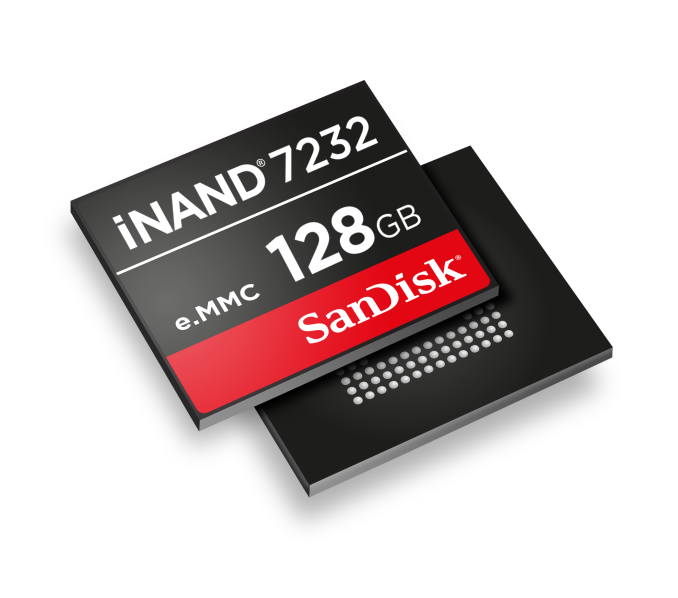
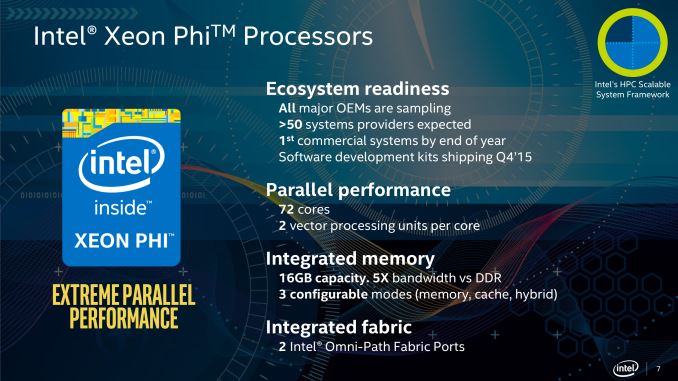
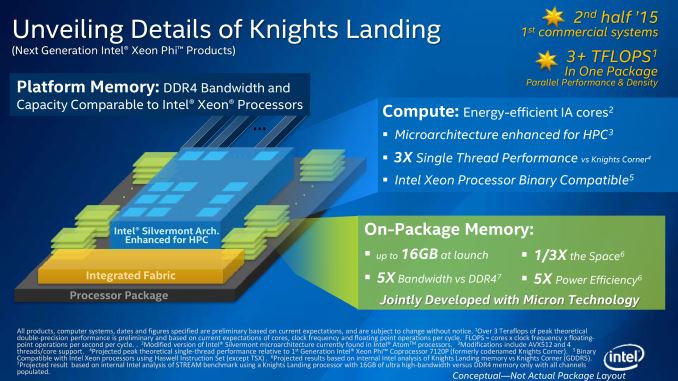
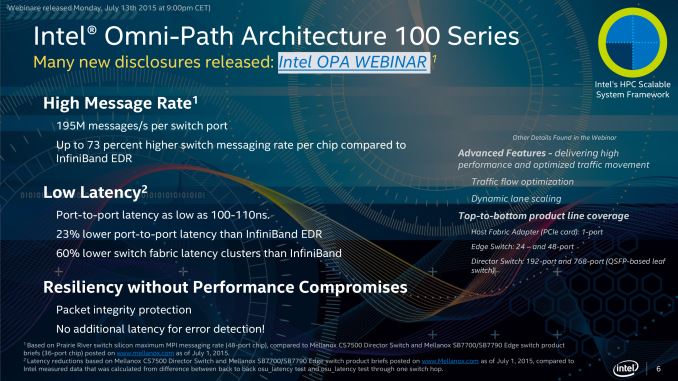
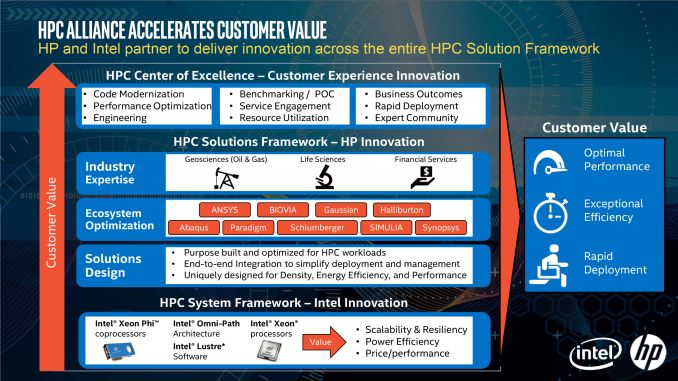


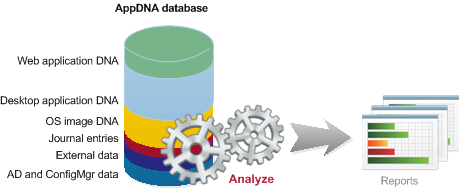



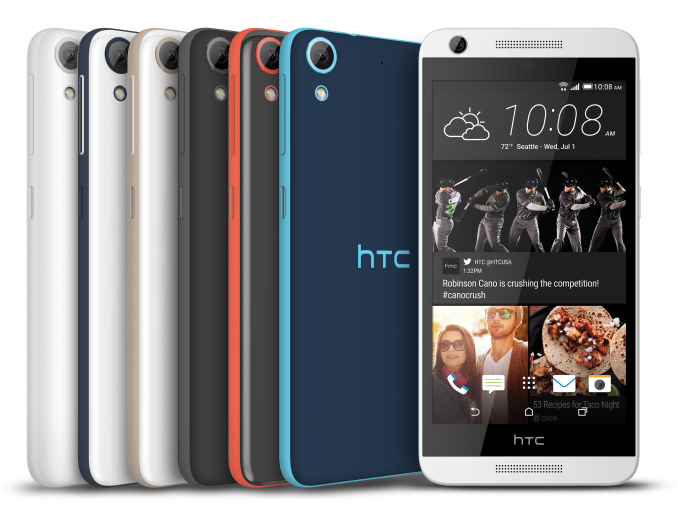

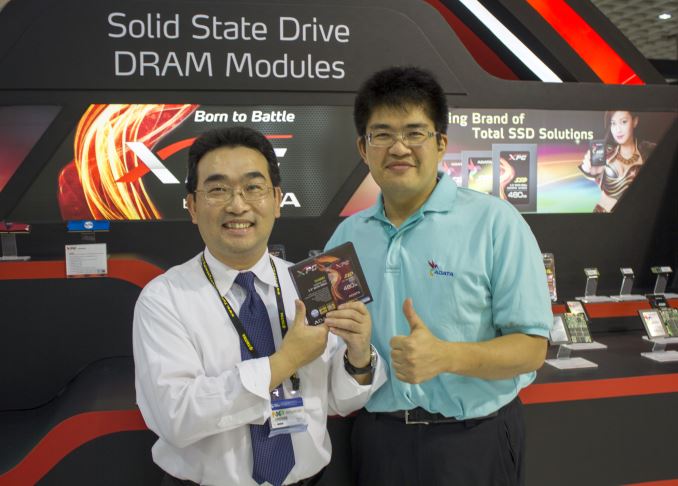
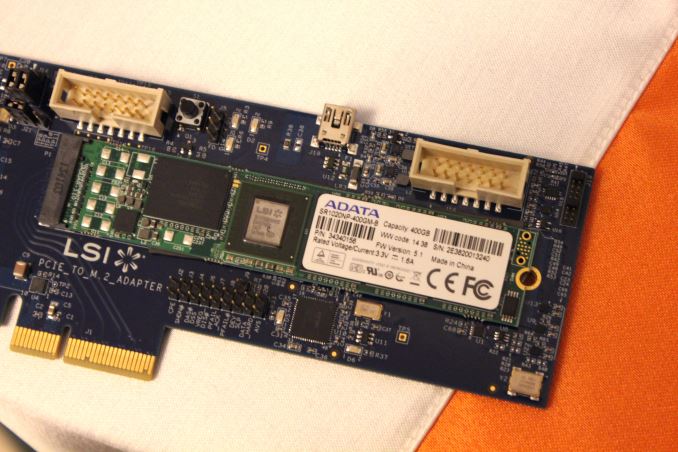
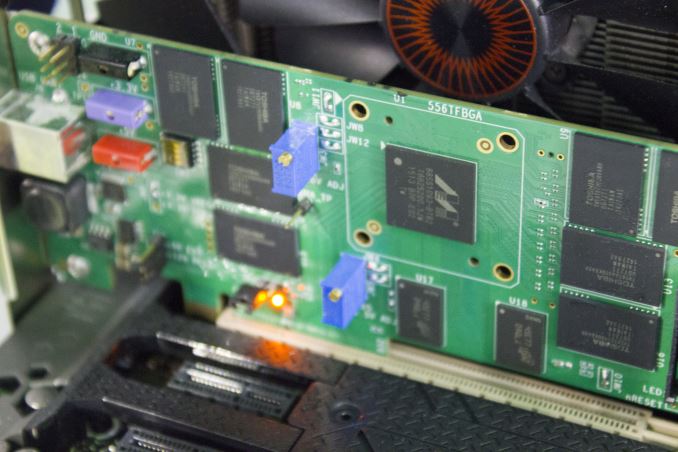


















Bookmarks